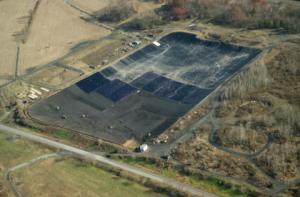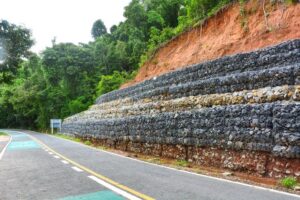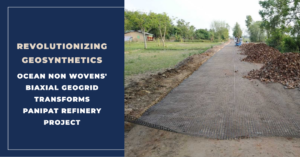Blanket Hydro Ceiling In Terrain Area – Nagaland Case Study
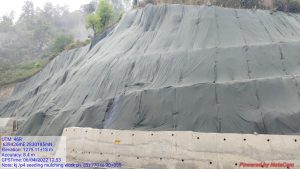
Reinforced soil systems are geotechnical structures including reinforcing factors and in the main consist of robotically stabilized earth (MSE) partitions and bolstered soil slopes. MSE partitions and RSS are built via way of means of putting alternating layers of reinforcement and compacted soil in the back of dealing with detail to shape a composite cloth that acts integrally to restrain lateral forces. In historic times, a whole lot of substances have been used as soil-reinforcing factors, consisting of tree branches and straw.

Common types of modern soil reinforcement elements are steel strips, welded steel mesh, wire mesh, geogrids, and geotextile sheets. The use of a cladding system prevents soil fraying between reinforcing elements and allows for the safe construction of very steep slopes and vertical walls. A variety of materials are used for cladding, including precast concrete slabs, dry cast modular blocks, welded wire mesh, perimeter geosynthetics, and gabions. The soil material placed in the reinforcement zone is called the reinforcement fill, and the soil or backfill material placed in place just behind the reinforcement zone is called the retained backfill.
The impact of geosynthetic properties on the long-term performance of MSE walls and RSS should be carefully considered during the design process. When designing geogrid-reinforced soil structures, long-term strength comes directly from these properties, so designers can determine the geogrid’s mechanical, creep, installation damage, and durability properties. It needs to be considered carefully. Of some mechanical properties, geogrid tear strength is the most relevant property for MSE wall and RSS designs and suits the terrain region with perfection.
Product – Ocean Geogrid
Quantity – 50100sq more
Location – Nagaland
Problem
The improvement of soil load capacity by installing stone pillars is mainly due to three factors. First, hard columnar materials such as crushed stone and gravel increase the rigidity of the floor and increase the maximum load capacity. Second, when installing a stone pillar, the surrounding soil is compressed by the vibration when installing the pillar. This will compact the soft ground. A third factor in improving the strength of columnar floor systems is vertical drainage pipes that help integrate the mass of the floor. This will increase the strength of the floor.
Solution
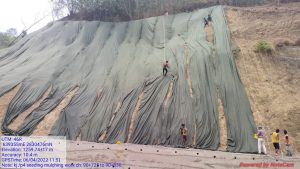
The load-bearing capacity of the stone pillar is due to the lateral earth pressure. If very soft soil is present at the location of the stone pillars, the soil cannot provide lateral containment to the extent required, increasing the likelihood of lateral swelling Therefore, geosynthetics/geogrid wraps provide additional lateral confinement to prevent column breakage in such cases.
Experiments performed on geogrid-covered stone columns have shown that the support of the columns can increase by 5060% when covered with geogrids. Geogrids give stone pillars additional stability and reduce subsidence. It has been found that providing geogrid wraps increases the rigidity of the stone pillars. However, if the column is inserted by the floating mechanism, part of the geogrid (bottom 25%) will not be used for cladding. This is the main reason why floating columns are less efficient than end-supported stone columns.

